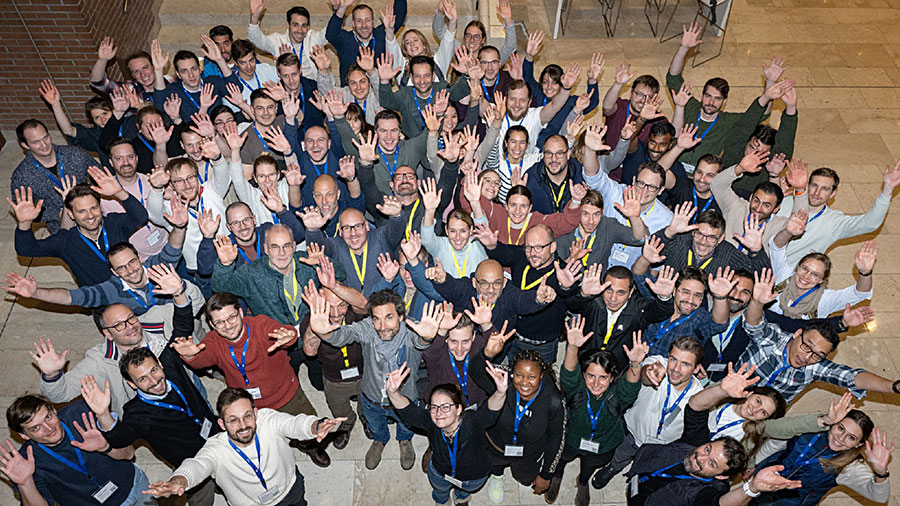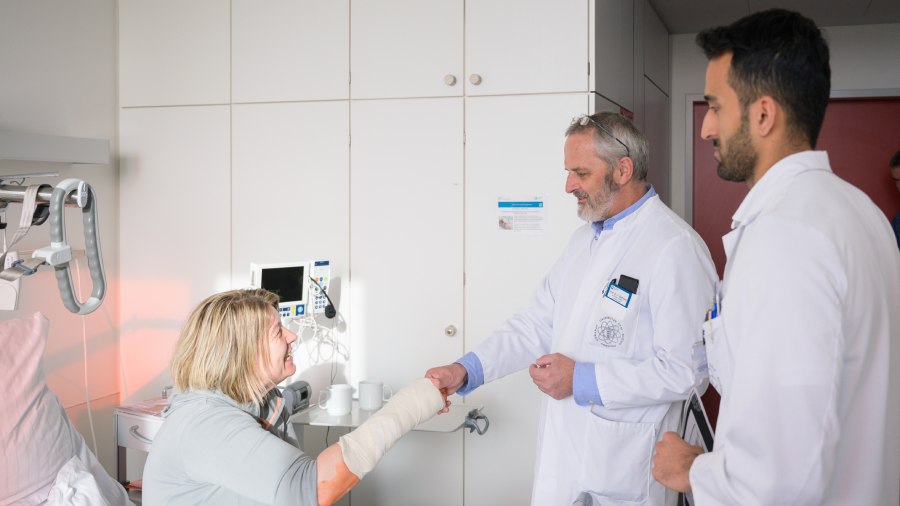How to track and measure your impact online
BY AO MARKETING

We recently provided a practical guide to help you maximize the impact of your work online. To recap, we discussed how to leverage social media, harness the power of podcasts, position yourself as an authority and develop your professional networks – and how to do all that in a way that feels authentic and professional.
Disclaimer: The article represents the opinion of individual authors exclusively and not necessarily the opinion of AO or its clinical specialties.
If you’ve already implemented some of those strategies, congratulations! You have probably sparked some interesting discussions around your research and met potential future collaborators. You may even have secured media coverage or invitations to join research groups or speak at an event. Your efforts are bearing fruit—but this is really only the beginning.
Where our previous blog post unpacked the ‘how’ of promoting your work online, here we explore the ‘why’ and crucially, the ‘what next’.
Gather a toolkit to measure your influence
Just as you would approach surgery with the best instruments to hand, so you need the right tools to measure your impact online. The internet is awash with choice, but we’ve selected the most reliable and useful tools for researchers and clinicians:
- Altmetrics – This metric tracks the attention your research gets online through social media, news outlets, policy documents, blogs and other platforms. A high score on altmetric.com indicates a research paper that is attracting a lot of online attention. Many journals are connected to altmetrics, including Global Spine Journal which provides altmetrics for all of their articles, and this way you can see the attention each individual article is receiving in the media.
- Author-level metrics – Where altmetrics helps you to track a particular publication, author-level metrics offer a consolidated view of your overall impact as a researcher. ResearcherID (Web of Science) and ORCID use unique identifiers to track your publications, citations and h index across various databases. Google Scholar Profile is another freely accessible tracking tool, and it has the bonus of offering automatic updates and an easy to navigate user interface. You can connect your ORCID IDs to various submission systems as well so it will make sure to track what you are publishing. You can connect your ORCID ID to your GSJ author profile and any article you submit that gets accepted will automatically be connected to your ORCID account.
- Usage metrics – Many journals and repositories provide data on how often your papers are downloaded, while platforms such as ResearchGate and publisher websites count how many times they’ve been viewed or read. Many journals will be able to provide you with information about your published article. For example, every GSJ article has a metrics and citations tab where you can click and see the metrics- (including altmetrics and citations for each individual article), so if you have published in GSJ you can see how your article is doing in real time.
Our previous blog post highlighted that online promotion is not bragging; it’s amplifying your research. Likewise, the tools and metrics provided for online monitoring are not about vanity; they give a comprehensive understanding of the impact of your work on both the scientific community and broader society. Self-promotion is one of the best ways to promote an article, even more so than the journal or society promoting your article, but it is always good to also have the journal and/or society promote your article as well.
You now have a rich and detailed picture of the online impact of your research and wider practice. Why does this matter? It matters because it helps to illuminate the path ahead. Using the data from these tools, you can develop a strategic approach to further increase your visibility, enhance your professional reputation and ensure that your research reaches the right audiences.
Use research metrics to enhance your profile
While research metrics are gathered by journals and online aggregators, it’s important to remember that your metrics ultimately belong to you. And thanks to the powers of social media, we no longer have to rely on traditional media for coverage of our career successes. Instead, we can take control of our own professional profile and showcase our achievements.
A simple place to start is by updating your CV, biography, and academic profiles to include key metrics such as your h index, total citation count and notable altmetrics. These can help demonstrateyour credibility and impact in the field. Since these metrics are universal, they’re particularly powerful for reaching an international audience who may not know the local reputation of you, your clinic or your institution.
Creating a personal website or blog is another quick and easy way to take control of your professional profile. You can use this space to showcase your research, publications and impact metrics, and posting regular updates will help to build your audience.
When it comes to building audiences, social media is truly king. ResearchGate gives you access to more than 25 million scientists and researchers, while LinkedIn opens up your work beyond the limits of academia. Sharing milestones like reaching a certain number of citations or being published in a high impact journal catches the attention of journalists, funders and policymakers, amplifying your voice and reputation.
Harness the power of social listening
There is considerable research around the power of active listening, a subject that has also inspired countless talks and coaching books. But did you know that listening is also a well-established social media marketing strategy?
Social listening is the process of proactively tracking not only a ‘brand’ but also its competitors, audience, industry and trends. By contrast, social monitoring is more reactive, looking only for specific mentions of the brand itself.
For clinicians, social monitoring means tracking mentions of you or your research, while social listening provides an insight into the broader academic community, the topics they are discussing, relevant innovations and emerging thought leaders.
Use your altmetrics data to identify where your work is being discussed online, and engage in those discussions, whether on X, LinkedIn, blogs or other forums. It can also be helpful to identify key influencers in your field who have engaged with your work, as their reach can help boost your own research visibility.
It’s not about being cynical or jumping on trends. The key thing to remember is to engage in a genuine and authentic way, adding your own voice and expertise to a subject about which you are genuinely passionate and knowledgeable. Listening to others’ perspectives, sharing their work and contributing your own all builds a rich online community.
Social listening in action
The media reports a new breakthrough in minimally invasive surgery, telling the story of a patient who has benefited.
It sparks a discussion on LinkedIn about MI techniques, under the hashtag #misurgery
You post your own observations about MI surgery – providing both a professional insight into the best tools and techniques and a more personal view of your feelings towards it and how you have seen your patients benefit.
You can enhance this post with links to a more detailed blog post on the subject, an influential research paper or a seminar you delivered.
As well as promoting your own related content, you can tag others in your professional network and link to their work where relevant.
You now have a reciprocal relationship where others engaging in the discussion start tagging you and linking to your comments.
You are invited to join a specialist group and meet new collaborators.
Translate your research for the real world
We have discussed how to amplify your ‘voice’ on social media and engage in wider conversations relating to your specialism. It’s important to also consider how your research translates beyond academia. Here are a few practical steps to achieving that:
Talk to your institution
Share your impact metrics with your institution’s communications team. They may highlight your work in newsletters, press releases or their website and socials, further promoting your research.
Contribute to professional networks like the AO
Non-profit organizations including us at AO love to highlight the professional achievements of our members. Share your career milestones or contribute guest blogs to enhance your profile and disseminate your work to a larger audience.
Engage with the public and policymakers
Writing articles or opinion pieces for popular science outlets or the general media is a great way to help translate your academic impact into broader societal impact. If your work has implications for public health or policy, use your citation metrics to engage with policymakers, NGOs, or advocacy groups. This can lead to your work being cited in policy documents or even influencing change.
Don’t forget to track and adjust regularly
Starting a new habit—such as regular online promotion—is never easy to do, yet it’s surprisingly easy to settle in and repeat! Remember, social media moves fast and so does your career. This makes it all the more important to regularly take stock of your strategy and make sure it’s still the right fit.
If you’re using social media, look for any patterns around engagement. You may find that some topics spark considerable discussion, or certain media types—such as videos or blog posts—attract the most shares.
Similarly, Google Scholar and other tools can provide alerts when your work is cited, which can be useful in understanding the research that is particularly influential or addresses a topical issue.
Of course, research is not about populism. These metrics don’t influence the work itself but can provide useful insights into the success of your promotional strategy. Is your research reaching the right audience? Are your professional insights being picked up by policymakers and the press? On the flip side, are you keeping up to date with developments in your field and discovering the leaders who can improve your own practice?
Take the time out to regularly review your metrics and check that the strategy you have in place is serving you. If you are a young researcher at the start of your career, your goals may center on building professional networks. Surgeons undertaking new research may want to engage with potential funders. Perhaps you have taken on a faculty position and want to network with other educators.
As your career moves on, so should your strategy for celebrating it. AO is here to support you with any questions you encounter along the way.
You might also be interested in:
Maximize the impact of your work
Explores self-promotion strategies to promote your work with greater effect and to reach as many people as possible within the orthopedic community and beyond.
The AO Community
The AO clinical divisions and clinical unit continually redefine the state of the art in their fields, maintaining activities in research, development, clinical investigation, innovation, and education.
AO Innovation Translation Center (AO ITC)
Developing clinical solutions with industrial partners, innovation gathering, proof-of-concept studies, strategic investment in IP, technology, or companies, and evidence creation through clinical research.





